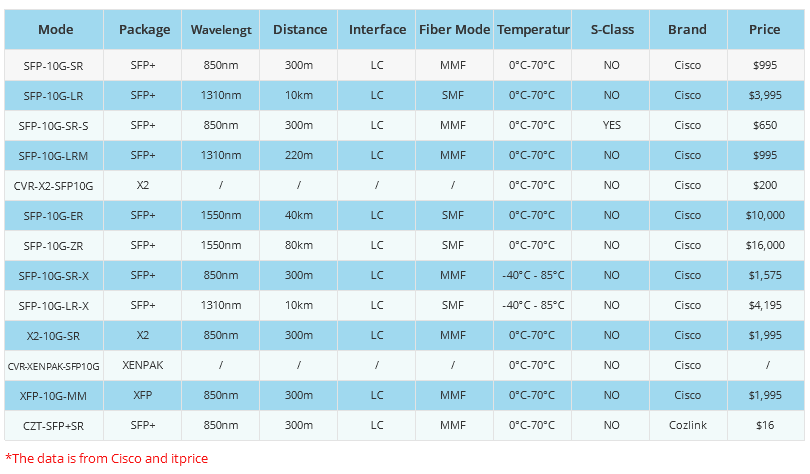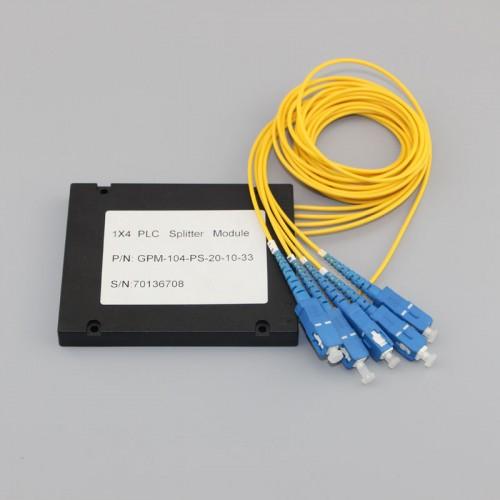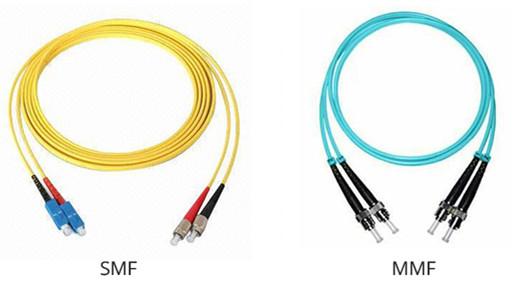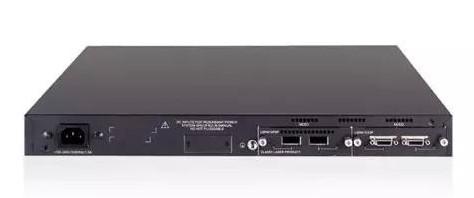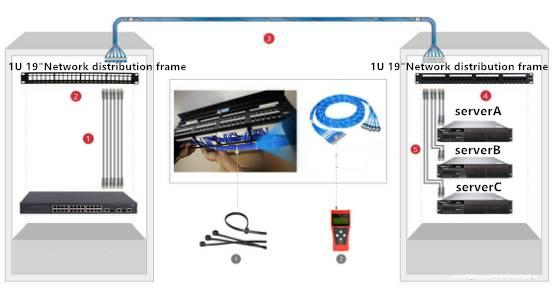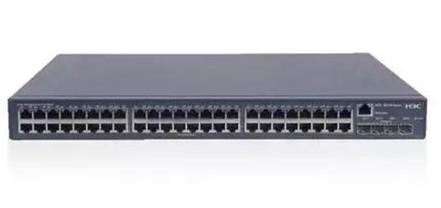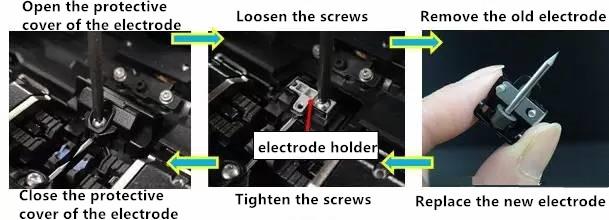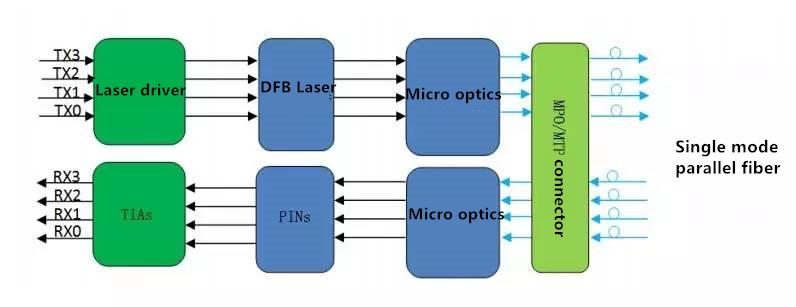- Related articles
- Optical Transceivers for Cisco SF500-24P-K9-G5 Switch
- Optical Transceivers for Cisco SG300-10MPP-K9-EU Switch
- Optical Transceivers for Cisco ME-3600X-24FS-M= Switch
- All Cisco MGBSX1's information (List price, Specs, Datasheet PDF, Compatibility matrix)
- Optical Transceivers for Cisco WS-C3560E-24TD-SD Switch
- Optical Transceivers for Cisco WS-C3560V2-24TS-S Switch
- The Things You Need to Know about 1000BASE-SR Ethernet Standards
- All Cisco DWDM-XENPAK-40.56's information (List price, Specs, Datasheet PDF, Compatibility
- All Cisco GLC-FE-100LX's information (List price, Specs, Datasheet PDF, Compatibility matr
- The Difference between 100mbps and 1000mbps Network Card
Recommend tag
Overview of two types of 40G QSFP+LR4 optical modules: CWDM4 vs PSM4
2024-11-06
40G QSFP+LR4 optical modules are widely used in 40G networks, which include two types: 40G QSFP+LR4 CWDM4 optical modules and 40G QSFP+LR4 PSM4 optical modules. The former is used to connect wavelength division multiplexing links, while the latter is used to connect parallel single-mode fiber links, but what is the difference between these two modules? The following text will provide a detailed introduction to ETU-LINK communication.
1、 Terminology Analysis of CWDM4 and PSM4
CWDM4 (Coarse Wavelength Division Multiplexing) refers to coarse wavelength division multiplexing, which is a type of WDM (wavelength division multiplexing) that can transmit and receive signals through multiple channels on a single optical fiber. It is commonly used in point-to-point structured cabling in communication networks and is multiplexed into a single-mode optical fiber through CWDM.
PSM4 (Paralell Single Mode 4 lanes) means parallel single-mode 4-channel, a fiber optic data transmission standard.
Unlike CWDM optical modules that transmit or receive signals through multiple channels on a single fiber, PSM can simultaneously receive and transmit signals on four parallel fibers.
2、 Overview and working principle of two types of 40G QSFP+LR4 optical modules
Overview of 40G QSFP+CWDM4 Optical Module
The 40G QSFP+LR4 CWDM4 optical module has an LC duplex interface, four independent transceiver channels, and a data transmission rate of up to 11.2Gbps per channel, complying with the QSFP+MSA standard and the IEEE 802.3ba specification for 40G LR4 links. It has four CWDM DFB lasers with center wavelengths of 1270, 1290, 1310, and 1330nm. Capable of supporting QDR/DDR Infiniband data rates, hot swappable electrical interfaces, and lower power consumption.
In addition, the 40G QSFP+LR4 CWDM optical module must be used together with single-mode fiber, and its maximum transmission distance is 10km.
Working principle of 40G QSFP+CWDM4 optical module
The 40G QSFP+CWDM4 optical module converts 4-channel 10Gb/s electrical input data into CWDM optical signals (optical) through 4 driver laser (DFB) arrays. The light is combined into 40Gb/s data by the MUX component and sent as an optical signal from a single-mode fiber. The receiving end receives a 40Gb/s CWDM optical signal input and demultiplexing it into four independent 10Gb/s channels of different wavelengths.
-Product Overview-
With the development of optical networks, especially after the emergence of 5G networks, data transmission volume has significantly increased. 40G optical modules have been widely used in various optical networks to quickly improve the transmission capacity and speed of optical networks.
The 40G launched by Xianyi Tong Technology complies with the QSFP MSA standard and uses highly reliable lasers with transmission distances of 100m, 300m, 1.4km, 2km, 10km, 30km, 40km, and 80km. It is hot swappable, has built-in digital diagnostic functions, and low power consumption. This model is QSFP+CWDM-LR4 with duplex LC interface, requiring 2-core single-mode fiber to achieve transmission and reception. The product features are as follows:
-Product Features-
1. Compliant with 40G Ethernet IEEE802.3ba and 40GBASE-LR4 standards;
2. Compliant with QSFP+MSA;
3. Compliant with QDR/DDR Infiniband data rate;
4. Each wavelength has a transmission rate of up to 11.2Gb/s;
5. Adopting 4-channel CWDM AUX/DEMUX technology;
6. Transmission over single-mode fiber (SMF) can reach up to 10 kilometers;
7. Working shell temperature: 0 to 70 ℃;
8. Power consumption ≤ 2.5W;
9. Duplex LC interface;
10. Compliant with RoHS.
-Product application-
1. High speed interconnection of data centers;
2.40G Ethernet;
3.40G network card communication;
4.10G-40G seamless upgrade.

Overview of 40G QSFP+PSM4 Optical Module
The 40G QSFP+PSM4 optical module is a four channel full duplex transceiver module. The QSFP full duplex optical module provides four independent transmission and reception channels, each of which can run 40Gbps 10km aggregated data rate at a speed of 10.3Gbps using single-mode fiber. These modules are designed to operate on single-mode fiber systems using 1310nm DFB laser arrays. Fiber optic ribbon cables with MPO/MTP connectors can be inserted into QSFP module sockets and have built-in digital diagnostic functions.
Working principle of 40G QSFP+PSM4 optical module
The 40G QSFP+PSM4 optical module adopts 4-channel 10G parallel technology, which can be split into 4-channel 10G links for transmission using MPO single-mode OS2 fiber jumpers. At the transmitting end, the electrical signal is converted into an optical signal by a laser array. When the signal is transmitted at the transmitting end, the parallel optical signal is converted into a parallel electrical signal, which is then transmitted to the receiving end through an optical fiber. At the receiving end, the photodetector array converts the parallel electrical signal back into a parallel optical signal, which is then transmitted to the transmitting end through an optical fiber.
-Product Overview-
With the development of optical networks, especially after the emergence of 5G networks, data transmission volume has significantly increased. 40G optical modules have been widely used in various optical networks to quickly improve the transmission capacity and speed of optical networks.
The 40G launched by Xianyi Tong Technology complies with the QSFP MSA standard and uses highly reliable lasers with transmission distances of 100m, 300m, 1.4km, 2km, 10km, 30km, 40km, and 80km. It is hot swappable, has built-in digital diagnostic functions, and low power consumption. This model is QSFP+PSM-LR4, MPO interface, requiring 8-core single-mode fiber to achieve transmission and reception (4-core transmission, 4-core reception). The product features are as follows:
-Product Features-
1. Four channel full duplex transceiver module;
2. Each channel can transmit data at a rate of up to 11.2Gbit/s;
3. Transmission over single-mode fiber can reach up to 10km;
4. Low power consumption<2.5W, meeting level 3 requirements;
5. Working shell temperature: 0 to 70 ℃;
6.3.3V power supply voltage;
7. Hot swappable QSFP external dimensions;
8. MPO interface;
9. Built in digital diagnostic function;
10. Safety certification: TUV/UL/FDA * 1, compliant with RoHS 6.
-Product application-
1. High speed interconnection of data centers;
2.40G Ethernet;
3.40G network card communication;
4.10G-40G seamless upgrade.
Specification parameters:


3、 The difference between 40G QSFP+LR4 CWDM4 and PSM4 optical modules
Both 40G QSFP+CWDM4 and 40G QSFP+PSM4 optical modules can be used for long-distance transmission, but there are still differences in interface, transmission distance, and application scenarios.

From the perspective of the infrastructure of the entire network system, when the fiber link is long, the cost of using a 40G QSFP+LR4 PSM4 optical module will be higher. It requires 8 single-mode fiber jumpers, while a 40G QSFP+LR4 CWDM4 optical module only requires 2 single-mode fiber jumpers.

TECHNICAL SUPPORT
Get solutions or consultation from the technical team.




























































